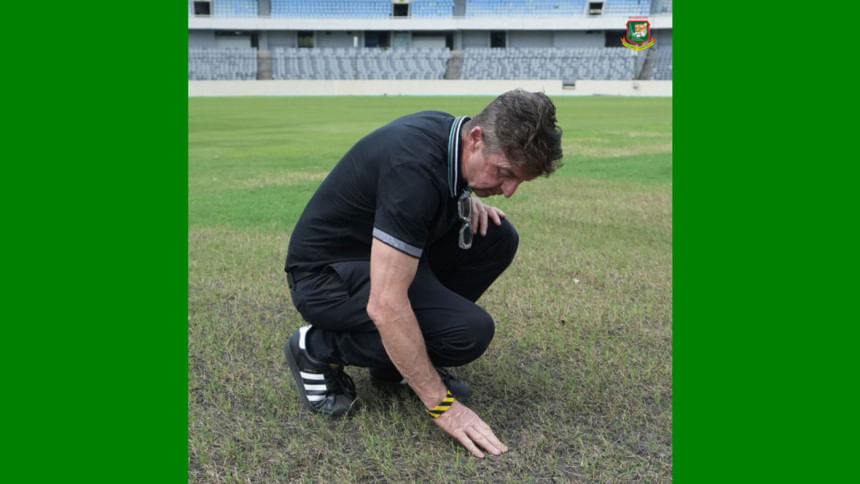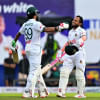Will BCB’s vagueness around Mirpur wickets change with Hemming?

Bangladesh Cricket Board (BCB) has once again brought back Australia's Tony Hemming -- this time as the head of turf management, after previously hiring him as a curator.
This decision has generated considerable buzz, largely because of his elevated role. Hemming now outranks Sri Lanka's Gamini De Silva, who has served as the head curator of the Sher-e-Bangla National Cricket Stadium in Mirpur since 2010.
For much of the past decade, the Mirpur surface has been under scrutiny for the wrong reasons, with Gamini's work questioned repeatedly.
"It's not like Gamini did not try, but maybe he had limitations which he could not overcome," BCB director Nazmul Abedeen Fahim said during a press conference following Saturday's board meeting.
So, why has the board only now acknowledged Gamini's limitations, despite Mirpur being one of the most criticised venues for many years?
Poor bounce in Mirpur has been a recurring complaint, especially since 2016. Yet it appears that the BCB has only recently prioritised reforming the wickets, after significant damage had already been done.
Mirpur has hosted 66 T20Is so far. Between 2011 and 2015, the average T20I score there was 142.5. Since 2016, that average has dropped to 130. Despite this decline, Gamini, who has been with BCB since 2010, did not feel the board's ire.
Given that the venue hosts most of the national team's matches, the Mirpur wickets have often been cited as a reason for batters' poor performances in ICC and other multinational tournaments.
Bats have broken due to players trying to adjust to the low bounce on practice wickets adjacent to the indoor facility. The academy wickets -- intended for use during the monsoon -- were underprepared in recent months.
These issues prompted new BCB president Aminul Islam to intervene personally, inspecting the wickets after hearing players' concerns.
There is reason to believe Gamini's explanations for the poor surfaces were less convincing this time, particularly after last month's home series against Pakistan.
Interestingly, media reports have often suggested that the national team preferred lower and slower wickets -- especially against non-subcontinental teams. However, in a recent press conference, BCB directors claimed that neither the coach nor the players wanted the kind of wickets prepared for the Pakistan series.
It is, however, widely known that during Chandika Hathurusingha's tenure, Bangladesh often relied on such wickets to secure favourable results.
Several explanations have been given for Mirpur's poor surfaces: overuse due to too many matches at the same venue, unfavourable weather conditions, and insufficient preparation time.
With Hemming's return, BCB signalled that it lacked confidence in Gamini's ability to implement necessary changes alone, effectively placing the blame solely on the Sri Lankan curator.
The reasoning remains unclear. For years, the board showed little urgency even after repeated complaints about the surfaces, while Gamini himself believed he was simply following instructions.
It finally dawned on BCB that transition to sporting wickets must be made, with BCB director Faheem saying that Hemming's work in Pakistan was promising.
In reality, Pakistan's wickets have generally been flat, offering runs for batters but lacking the balance that true sporting tracks provide.
Given the long-standing vagueness over what Mirpur wickets should be, responsibility for the situation should be shared. Yet, the BCB seems eager to praise itself for Hemming's appointment.
If the board's mindset on the importance of quality wickets has genuinely shifted, it will be reflected in Hemming's work over the coming months.
The BCB president told this newspaper that a variety of wickets is essential for better preparation, and that surfaces should be built around a clear plan. What that plan cannot be is replicating Pakistan-style pitches -- doing so would only prove that the BCB holds a very different idea of what "sporting wickets" truly mean.

 For all latest news, follow The Daily Star's Google News channel.
For all latest news, follow The Daily Star's Google News channel. 








Comments